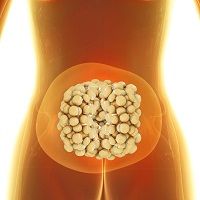Article
'Sensor' Cells Could Fight Obesity by Telling the Body to Burn Fat
Author(s):
Researchers in Australia recently reported that the immune signaling protein NLRP1 plays a key role in metabolism by activating fat-burning processes when the body's energy intake is too high.

Researchers in Australia recently reported that the immune signaling protein NLRP1 plays a key role in metabolism by activating fat-burning processes when the body’s energy intake is too high.
According to a news release that accompanied publication of the study, when NLRP1 is switched on, it “sets off a chain of events that instructs cells to use up their energy or fat stores to prevent excess fat accumulating.” NLRP1 could potentially be a target for novel therapies for type 2 diabetes and obesity.
Study author Seth Masters, BSc, PhD, said, “NLRP1 is a biological sensor that can respond to and prevent obesity and metabolic syndrome, which are causing a dramatically increasing burden of disease throughout the world… We showed that without NLRP1, fat stores continue to build up, especially with a high-energy diet, leading to obesity.”
NLRP1 controls the lipid-regulating hormone called interleukin-18 (IL-18). According to Andrew Murphy, PhD, from the Baker IDI Heart and Diabetes Institute, this research showed for the first time that “NLRP1 is the key to IL-18 production, explaining how it acts to reduce obesity.”
“Our long-term goal would be to develop a small molecule that activates the pathway to produce IL-18. In people who are obese, this would help the body to switch on this system and burn existing fat stores,” said Murphy.
Although these results are promising, the researchers cautioned that any therapy involving NLRP1 and IL-18 would have to be closely monitored to avoid potential side effects. This research showed that activation of NLRP1 “could be exacerbated by some diets, and identified that there is a fine balance between increasing the cell’s fat burning abilities and causing harm,” said Masters.
Potential treatment would likely be safer “if given in small doses over a long period of time, which is less likely to have potentially negative consequences,” he said.
The study results were reported in the article “IL-18 Production from the NLRP1 Inflammasome Prevents Obesity and Metabolic Syndrome,” published in Cell Metabolism.
In the study, mice that lacked NLRP1 (and thus IL-18) experienced “spontaneous obesity due to intrinsic lipid accumulation,” which was exacerbated by a high-fat or high-protein diet. Mice in which NLRP1 was activated (resulting in increased IL-18 production) experienced decreased adiposity and were “resistant to diet-induced metabolic dysfunction.”
Feeding these mice a high-fat diet resulted in “further increased plasma IL-18 concentrations and strikingly resulted in loss of adipose tissue mass.”
Based on these findings, the authors concluded that “NLRP1 is an innate immune sensor that functions in the context of metabolic stress to produce IL-18, preventing obesity and metabolic syndrome.”




